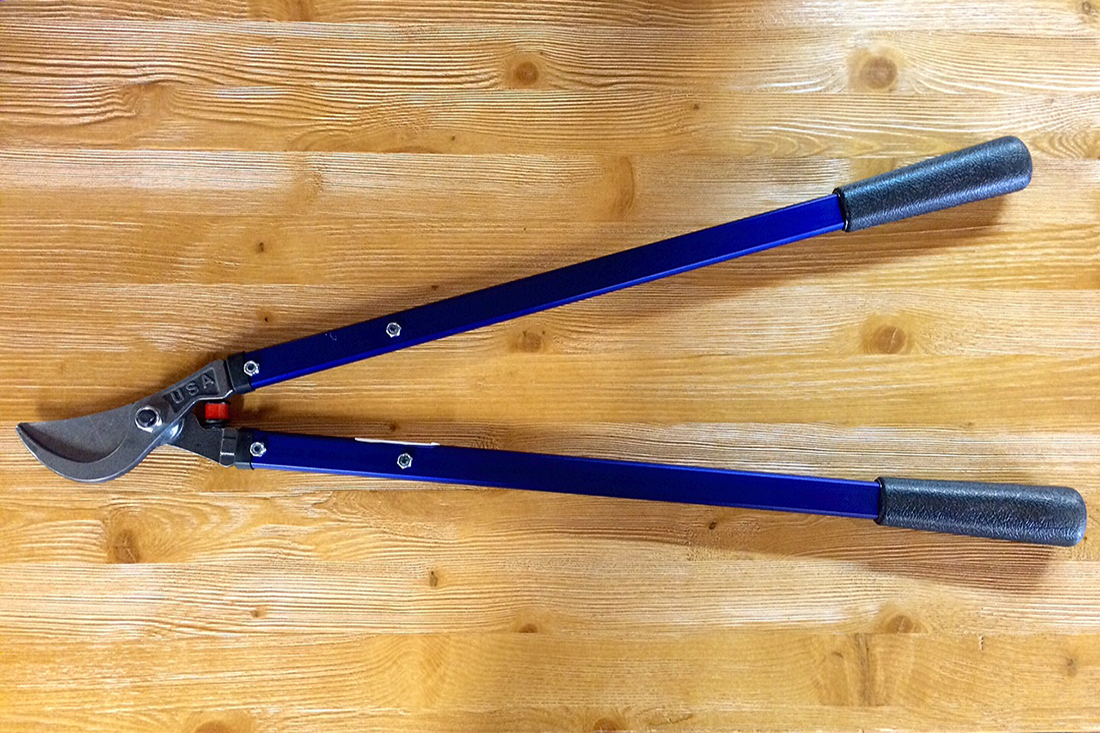Tool Primer: The Most Useful Tools For The Home Gardener
By Adam Cole
Finding the right tool for the job can be the difference between a pleasurable day of gardening and hours of hard toil. An efficient, well-made tool can save time and energy, and it can prevent stress and injury to your body. Gardening is a labor of love; the correct tool will help keep it that way.
There are thousands of different tools available to gardeners, but the vast majority of them fall into one of just a few categories: Tools for digging, tools for weeding, and tools for cutting. Here are some of our favorites in each group.
Digging Tools
There is no act more primary to gardening than digging in the earth; there is also no act more laborious. A good tool should slice through the soil cleanly, it should be easy on the body, and it should be strong enough to handle the task at hand. Remember to keep your digging tools nice and sharp for greatest ease of use.
The first tool you’ll need is a round point shovel. Our current favorite is the Razorback. This shovel boasts a 14 gauge steel blade, an extremely sturdy, reinforced head-to-handle connection, and a strong fiberglass handle. The Razorback round point shovel comes with a Limited Lifetime Warranty and is assembled in the United States from both American-made and imported parts.
Another very useful digging tool is a field hoe. A field hoe is a heavy bladed hoe that can chop through soft soil and clay alike. They are great for cultivating beds, attacking blackberry crowns, or digging small trenches. We recommend any of the Field Hoes by the Rogue Hoe Company.
These field hoes are made in Munden, Kansas from recycled plow disks. Rogue Hoes are extremely tough, and they maintain their edge very well. They come in a variety of widths, so you can choose one to fit your body and job.
Weeding Tools
Weeds can be a constant nuisance in the garden. Sometimes they just detract from the beauty of your landscaping, but at other times, weeds can steal nutrients, water, or light from your plants. Most of us spend a lot of time and energy weeding, but a good tool make the job seem effortless.
The tools for weeding vary depending on whether you will be weeding by hand or from a standing position.
Weeding by Hand
There are hundreds of different tools made for hand weeding. There are trowels, forked dandelion pullers, cultivators, disks, hand hoes, and many more. Our favorites are Hori Hori knives.
Hori Hori knives are sturdy, narrow metal trowels with one serrated edge. They are versatile tools that can be used for digging in soft soil or hard, rocky soil. The serrated edge makes the Hori Hori knife effective in removing roots or cutting at woody weeds. These tools are great for weeding and digging small transplant holes
The traditional Japanese Hori Hori knife has long been regarded as a real workhorse in the garden, and it is beautiful to look at too. The thick, sturdy, carbon steel blade pushes right through hard soil, and the wooden handle is light and comfortable in the hand. Many gardeners choose to paint this tool’s earth-toned handle red to prevent it from being lost in the garden.
Another great play on the Hori Hori knife theme is the Fiskars BigGrip Multipurpose Planting Tool. This economical little knife stands toe-to-toe with it’s more traditionally designed rivals, and it brings one great new feature: A bifurcated tip. The split tip of this knife allows a gardener greater maneuverability in rocky situations, and it makes it a cinch to pop weeds with tap roots.




